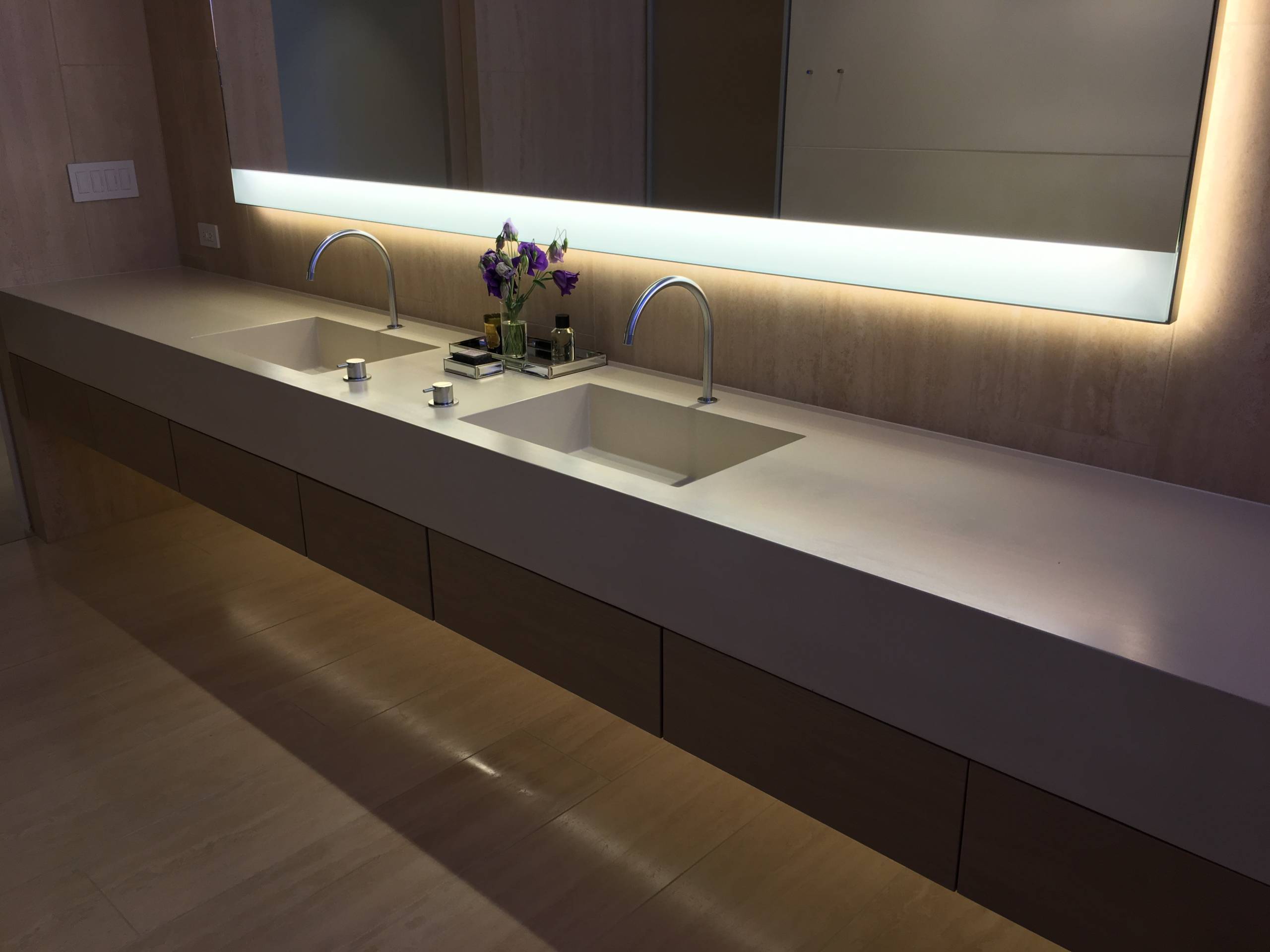Concrete might not be the first material that comes to mind when you think of nature-inspired design, but that perception…

Concrete sinks are an often overlooked yet powerful design element that can transform any space. With their captivating focal point ability, they instantly draw attention and become the center of attention in any room. Whether it’s a sleek and modern bathroom or a rustic farmhouse kitchen, concrete sinks effortlessly steal the limelight.
Concrete sinks are a design powerhouse, offering a captivating focal point, versatility in sizing and customization options, an industrial yet elegant charm, durability and adaptability in style, and the ability to bring warmth and character to any space. Their impact is undeniable, and incorporating them into a design scheme will undoubtedly elevate the overall aesthetic.
Why Concrete is Trending in Sink Design
Concrete has become increasingly popular in sink design in recent years. This trend can be attributed to its durability, modern aesthetic, and customizable design options. Concrete sinks offer a unique and stylish alternative to traditional sink materials such as porcelain or stainless steel.
One of the reasons why concrete sinks are trending is their exceptional durability. Concrete is known for its strength and resistance to wear and tear, making it an ideal material for sinks that endure daily use. Unlike other materials, concrete sinks are less likely to chip or scratch, ensuring longevity and low maintenance.
Moreover, concrete sinks provide numerous options for customization. The versatility of concrete allows for endless design possibilities, making it possible for homeowners to create a sink that perfectly matches their individual style and preferences. Two popular styles of concrete sinks are vessel sinks and trough sinks. Vessel sinks are standalone sinks that sit on top of a counter or vanity, creating a striking focal point in the bathroom. Trough sinks, on the other hand, are long and narrow sinks that often accommodate multiple faucets, making them ideal for shared bathrooms or commercial spaces.
Advantages of Concrete Sinks
A concrete sink offers numerous advantages that make it a superior choice for homeowners and designers alike. Firstly, its durability is unmatched. Concrete is a strong and sturdy material, capable of withstanding heavy use and resisting cracks and chips. This makes it perfect for high-traffic areas like bathrooms and kitchens.
In addition to its durability, concrete sinks also provide a wide range of customization options. They can be made in various shapes, sizes, and colors to suit individual preferences and design themes. This allows homeowners to create a unique and personalized look for their sinks, adding a touch of individuality to their spaces.
Another key advantage is the heat and stain resistance of concrete sinks. Unlike other materials, concrete can withstand high temperatures, making it ideal for use in kitchens where hot pots and pans are frequently used. Additionally, it is highly resistant to stains, ensuring that the sink maintains its pristine appearance over time.
Lastly, concrete sinks offer unparalleled design versatility. They can be seamlessly integrated into any style, from modern and minimalist to rustic and traditional. This versatility allows designers to experiment with different textures and finishes to create a truly standout feature in the bathroom or kitchen.
Types of Concrete Sinks Available
In the market today, there is a wide variety of concrete sinks available to suit different designs and preferences. One popular type is long trough sinks, which feature a sleek and elongated design. These sinks are often equipped with two spigots, allowing for convenient sharing between multiple users. They are ideal for larger bathrooms or commercial spaces such as restaurants or hotels.
Another type of concrete sink is the double sink configuration, offering two individual basins side by side. This style is perfect for bathrooms where multiple people need to use the sink simultaneously, providing separate spaces for each user.
For smaller areas, vessel sinks are a popular choice. These types of concrete sinks are designed to sit on top of the countertop or vanity, creating a stylish and contemporary look. Vessel sinks are available in various shapes and sizes, allowing for customization and flexibility in design.
Textures and Colors for Concrete Sinks
When it comes to concrete sinks, there is a wide range of textures and colors available to suit various design preferences. The surface texture of concrete sinks can vary, ranging from smooth and polished to matte or even rough-hewn. This allows for flexibility in achieving the desired aesthetic look and feel.
In terms of colors, concrete sinks can be tinted in a vast array of shades. Neutral shades are often popular choices, as they provide a versatile and timeless appeal that complements a variety of interior styles. Light pastel-y colors are also commonly used, especially in bathrooms or kitchen spaces where a softer and more delicate atmosphere is desired.
Standard measurements for concrete sinks typically follow industry standards, offering a range of sizes to fit various countertop configurations. However, customization options are available for those who wish to have a more unique size or shape for their sink.
Not only can the color of concrete sinks be customized, but the finish can also be tailored to specific preferences. Whether it’s a glossy polished surface or a more rustic and raw concrete finish, the options for customization are vast.
Caring for Concrete Sinks
Caring for concrete sinks is essential to maintain their durability and aesthetic appeal. One crucial step in concrete sink care is sealing the surface, as it serves as a protective barrier against stains and discoloration.
To ensure proper care for concrete sinks, follow these steps. First, regularly clean the sink with a mild, non-abrasive cleaner and a soft cloth or sponge. Avoid using harsh chemicals or abrasive scouring pads as they can damage the surface. Secondly, dry the sink thoroughly after each use to prevent water spots and mineral buildup.
Sealing the surface of a concrete sink is of utmost importance to protect it from staining and discoloration. A high-quality sealant acts as a barrier, preventing liquids from penetrating the porous material. This is especially crucial for concrete sinks, as they are prone to absorbing substances that can cause unsightly marks and discoloration.
Want More Information? Contact Concreteworks East
If you are interested in finding out more about concrete sinks, reach out to Concreteworks East. We specialize in all things concrete and can provide you with the information you need. Our team of experts can answer any questions you may have and provide you with valuable insights.
We understand that each customer has unique needs and preferences, and we strive to deliver tailored solutions. Whether you are looking for a specific design or want to learn more about the durability and maintenance of concrete sinks, our team will take the time to assist you.



